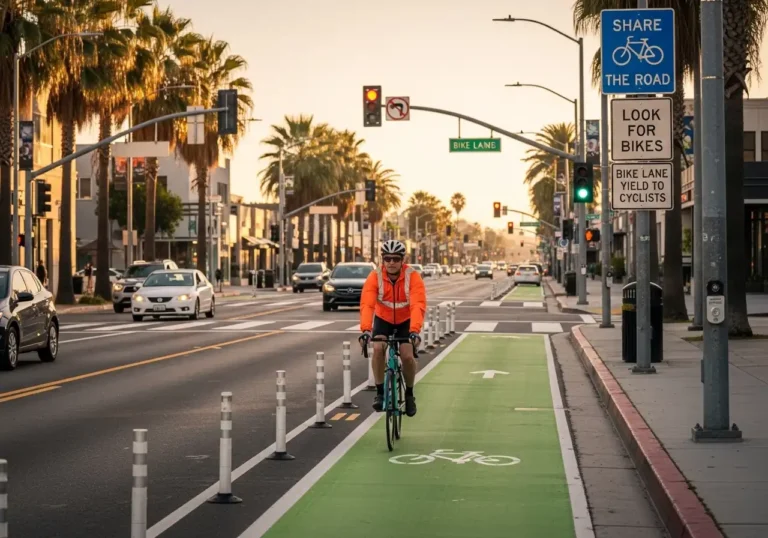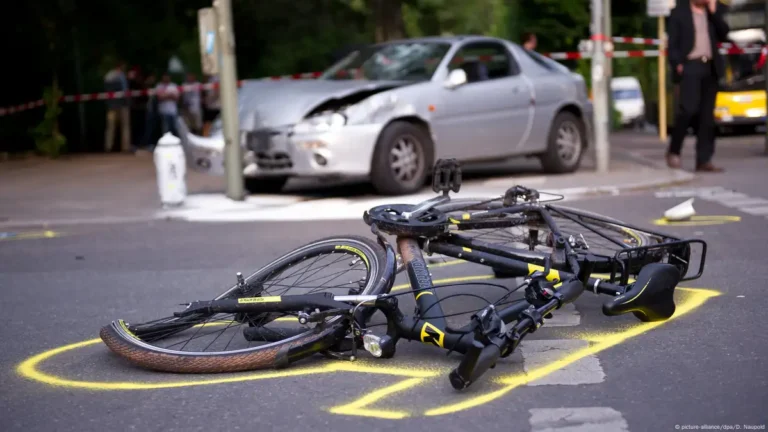Being involved in a bicycle accident can be a traumatic experience, leaving you with physical injuries, emotional distress, and often significant financial burdens. If the accident was caused by someone else’s negligence, proving liability is essential to secure the compensation you deserve. In bicycle accident cases, determining who is at fault is a crucial step in the legal process. This can involve gathering evidence, talking to witnesses, and working with legal experts to establish the other party’s responsibility.
In this blog, we’ll walk you through how to prove liability in a bicycle accident case and explain the legal steps involved to ensure you have the best chance of receiving compensation.
1. Understanding Liability in Bicycle Accidents
Liability refers to who is legally responsible for the accident. In bicycle accident cases, the party at fault could be a negligent driver, a government entity responsible for road maintenance, or even the manufacturer of a defective bicycle part.
Common Causes of Bicycle Accidents:
-
Negligent drivers: Drivers who fail to yield to cyclists, run red lights, or engage in distracted or reckless driving may be responsible for an accident.
-
Hazardous road conditions: Poorly maintained roads or hazardous conditions, such as potholes, construction debris, or uneven surfaces, can cause accidents and make the responsible party liable.
-
Defective bicycle parts: If a bicycle part malfunctions due to a design or manufacturing defect, the manufacturer or seller could be held liable for the accident.
-
Cyclist’s own actions: In some cases, the cyclist may be partially at fault. However, in California, the comparative fault rule allows injured parties to recover compensation even if they were partially responsible for the accident.
2. Gathering Evidence to Prove Liability
Proving liability in a bicycle accident case often comes down to the evidence you can gather following the incident. The more evidence you have, the stronger your case will be. Here’s a list of key evidence that can help prove the other party’s liability.
Key Types of Evidence:
-
Photographs: Take pictures of the accident scene, your bicycle, and any visible injuries. Document the road conditions, traffic signs, signals, and any damage to vehicles involved in the crash.
-
Witness Statements: Eyewitnesses who saw the accident can provide valuable testimony about what happened. Their accounts may be crucial in proving that the other party was at fault.
-
Police Reports: Always call the police after a bicycle accident. A police officer will assess the scene, gather information from the parties involved, and provide an official report. The report can include crucial information, such as the officer’s opinion on fault and any citations issued.
-
Surveillance Footage: In urban areas like intersections or near stores, there may be surveillance cameras that capture the accident. CCTV footage can provide an objective record of the events that took place.
-
Medical Records: Medical records documenting your injuries can serve as evidence to demonstrate the severity of the accident and how it was caused. They can also help link your injuries directly to the crash.
How a Lawyer Helps:
A skilled bicycle accident lawyer knows how to gather and organize this evidence, ensuring that nothing is overlooked. They can help secure footage, interview witnesses, and collect police and medical records that support your claim.
3. Establishing the Negligence of the At-Fault Party
To prove liability, you must show that the other party was negligent in some way and that their negligence directly caused your accident. Negligence refers to the failure to act in a reasonable manner to prevent harm to others. In bicycle accident cases, negligence can take many forms, including:
-
Distracted Driving: A driver texting, talking on the phone, or otherwise distracted may fail to notice a cyclist on the road.
-
Failure to Yield: Drivers are required to yield the right of way to cyclists in certain situations. If a driver fails to do this, they may be liable for the accident.
-
Reckless Driving: Speeding, running red lights, or making unsafe lane changes are examples of reckless driving that can lead to an accident.
-
Poor Road Maintenance: A city or government entity may be liable for failing to repair dangerous road conditions, such as large potholes or missing bike lanes.
-
Defective Equipment: If a bicycle accident was caused by faulty brakes, tires, or other components, the manufacturer or retailer could be held liable.
How a Lawyer Helps:
A lawyer will work with experts, such as accident reconstructionists and engineers, to analyze the circumstances of the crash and determine the other party’s negligence. They can also identify any potential third parties who may be responsible, such as a vehicle manufacturer or government agency.
4. Proving Causation: Connecting the Accident to Your Injuries
To secure compensation in a bicycle accident case, you must prove that the other party’s negligence directly caused your injuries. This is known as causation. Even if the other party was negligent, it’s essential to show that their actions or inactions led to the accident and your resulting injuries.
How to Prove Causation:
-
Medical Records: Your medical records will show the type of injuries you sustained and the treatments required. A lawyer can use this to establish a clear link between the accident and your injuries.
-
Expert Testimony: In some cases, medical or accident reconstruction experts may be needed to testify about the severity of your injuries and how they relate to the accident.
-
Timeline of Events: Your lawyer will create a timeline of events from the moment of the accident to the moment of treatment, helping to demonstrate how the accident directly caused your injuries.
How a Lawyer Helps:
An experienced lawyer will gather medical expert opinions and work with accident reconstruction specialists to connect the accident to your injuries. This strengthens your case by providing compelling evidence of causation.
5. The Role of Comparative Fault in Bicycle Accidents
California follows a comparative fault rule, which means that even if you were partially at fault for the accident, you may still be entitled to compensation. Your compensation will be reduced by the percentage of fault assigned to you.
How Comparative Fault Works:
-
If you are found to be 30% at fault for the accident, your compensation will be reduced by 30%. For example, if your total damages are $100,000, you would receive $70,000.
-
If the other party is primarily responsible for the accident, you can still pursue compensation for your injuries, even if you contributed in some way.
How a Lawyer Helps:
A lawyer will argue on your behalf to ensure that your degree of fault is accurately assessed. They will work to minimize your percentage of liability and maximize the amount of compensation you receive.
Final Thoughts
Proving liability in a bicycle accident case is crucial to ensuring you receive the compensation you deserve for your injuries and damages. By gathering strong evidence, proving negligence, and establishing causation, you can build a solid case. A skilled bicycle accident lawyer can guide you through every step of the process, making sure your rights are protected and that you have the best chance of a successful claim.
If you’ve been involved in a bicycle accident, contact a knowledgeable bicycle accident lawyer today for a free consultation. Let them fight for your rights and help you get the compensation you deserve.



